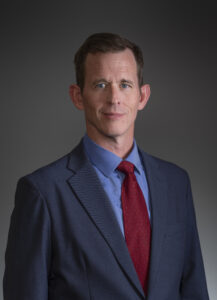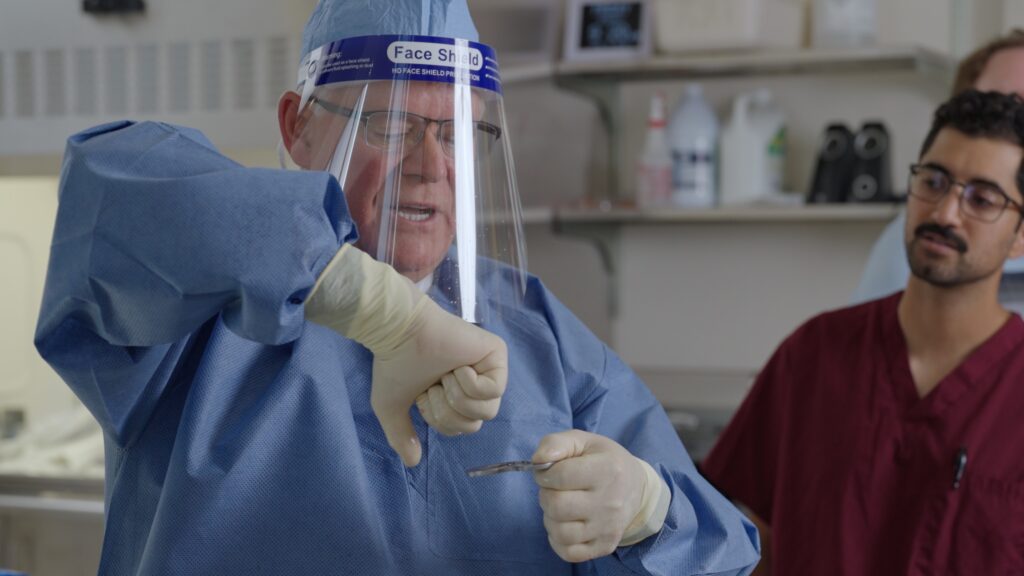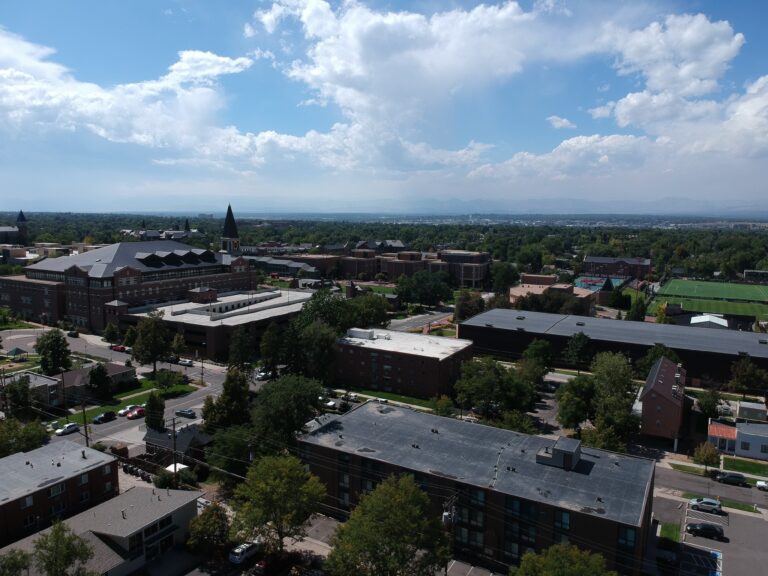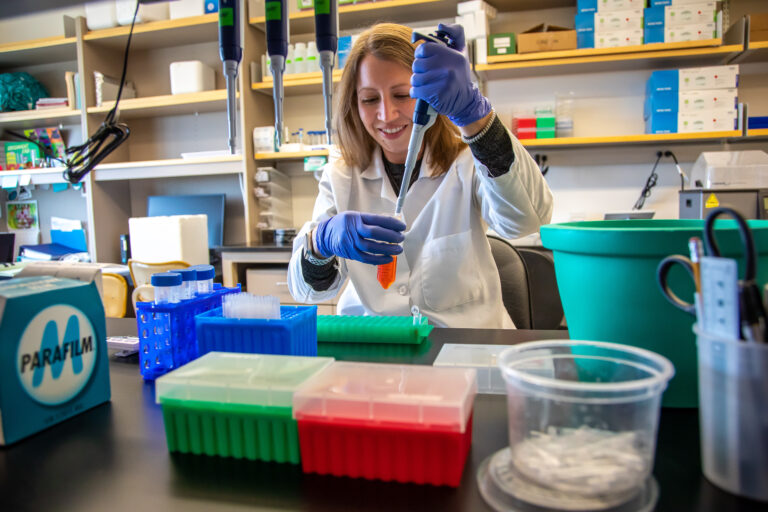DENVER — Founded in the late 1990s by University of Denver faculty members Paul Rullkoetter, Ph.D., and Peter Laz, Ph.D., the Center for Orthopaedic Biomechanics has helped catalyze a wide range of innovations in implants and relevant surgeries in the years since.
Part of the Department of Mechanical & Materials Engineering at DU’s Ritchie School of Engineering & Computer Science, the center utilizes a variety of experimental and computational tools to conduct research on joint mechanics, human motion, musculoskeletal modeling, and medical device testing.
The center works with DU students and faculty members, as well as orthopaedic surgeons and medical-device manufacturers such as Johnson & Johnson, Stryker and Mizuho OSI. Funding comes from such disparate sources as the National Science Foundation and Nike.
“A big part of our research and focus is around implant design, so designing new knee replacements, hip replacements, shoulder replacements, all different kinds of orthopaedic medical devices,” said DU associate professor Chadd Clary, Ph.D., a member of the center’s team.
Clary collaborated with Rullkoetter on knee-implant development while working on his doctorate at the University of Kansas in the early 2000s. He subsequently worked for Johnson & Johnson’s DePuy Synthes for seven years, continuing his work on what would become the ATTUNE knee system, before joining the center in 2016.

Clary said that the center’s work aims to improve the lives of patients who are suffering from osteoarthritis and other degenerative joint conditions, with the number of knee and hip replacements now both exceeding 500,000 annually in the United States.
While treatment typically begins with rehabilitation and exercise, that’s just a first step for many patients. “At the end stage, we do medical device implantation, so knee replacement, arthroplasty, hip replacement, and that comes in a variety of different forms,” Clary said. “My primary focus is measuring the performance of those different types of implant systems.”
He continued, “Medical-device companies are always coming up with new ways of doing surgery, and so before they get FDA approval and put those implants into people, we frequently evaluate those and compare them to other devices that are on the market, and measure the novel behavior of that device to ensure it’s safe and effective for patients.”
Once new implants are on the market and available to patients, Clary and his colleagues “evaluate on the back end if they’re performing in patients the way that we predicted and anticipated they would when we did the preclinical work on the implant,” he said.
Beyond the implants themselves, the Center for Orthopaedic Biomechanics also evaluates surgical techniques via qualitative research. “Most of what we’re doing now is focused on robotic surgery,” Clary said. “We do a lot of work with surgeons trying to understand, using robotic surgery to place these implants, how that might influence the performance of the implant in the patient compared to more traditional means of putting the implants in.”
It’s largely about improving outcomes for patients, whose joints come in many different shapes and sizes. Traditional surgical techniques are “not very adaptable,” Clary said. “You use the same technique for every patient, but with robotic surgery, you can place an implant in three-dimensional space very, very accurately for both the femur and the tibia.”
The center recently helped with verification of DePuy Synthes’ VELYS robotic surgery system, which garnered approval for knee replacements in 2021. “We did a lot of the verification around that system, proving that it actually accomplishes the accuracy of implant placement,” Clary said. “The whole benefit of a robot is that it can put the implant in more accurately than a surgeon can using traditional instruments.”
Validating post-implant patient performance is a big challenge and a focus of research at the center that is often accomplished via the analysis of joint movement imaging. “With our measurements, we’re actually able to show the influence that the surgical decisions make on kinematics and knee mechanics,” Clary said.

At DU, Clary remains involved in DePuy Synthes’ ATTUNE knee system. It is now a multi-billion-dollar product that’s been implanted in more than 2 million patients worldwide as of 2024. “Most recently, we’ve been working on a hinged knee replacement, so when revisions fail, you actually get a physical hinge that can replace all of the bones and soft tissue of the knee,” he said. “I’ve been working in and around that implant family for a long time.”
The center is also working on a number of ongoing studies, including research on surgeon ergonomics, chronic patella dislocation, the biomechanics of hip replacements, and speculative investigations into artificial intelligence-enhanced surgery. “We’re busy,” Clary said. “We definitely have a lot of different research going on.”
Douglas Dennis, a board-certified orthopaedic surgeon at AdventHealth Medical Group Colorado Joint Replacement at Porter in Denver, has collaborated with the center on research for more than 15 years, and has co-authored several published studies with Clary.
The surgeons at Colorado Joint Replacement “feel privileged to work with the engineers at the center,” Dennis said. “The work we have done has added greatly to the field of hip and knee replacement, which is our expertise.”
He added, “We are lucky to have this center in the Rocky Mountain region.”
Corinne Lengsfeld, Ph.D., DU’s senior vice provost for research and graduate education, echoed a similar sentiment. “The Center for Orthopaedic Biomechanics has been consistently creating impact at DU for 25 years, training undergraduate, graduate, and postdocs who have gone on to very prestigious careers,” she said. “More importantly, the center has had a profound impact on total joint replacement surgery, design, rehabilitation, and patient outcomes. Their ability to thread innovation from imaging, computational design, and experimental evaluation is beyond compare.”





